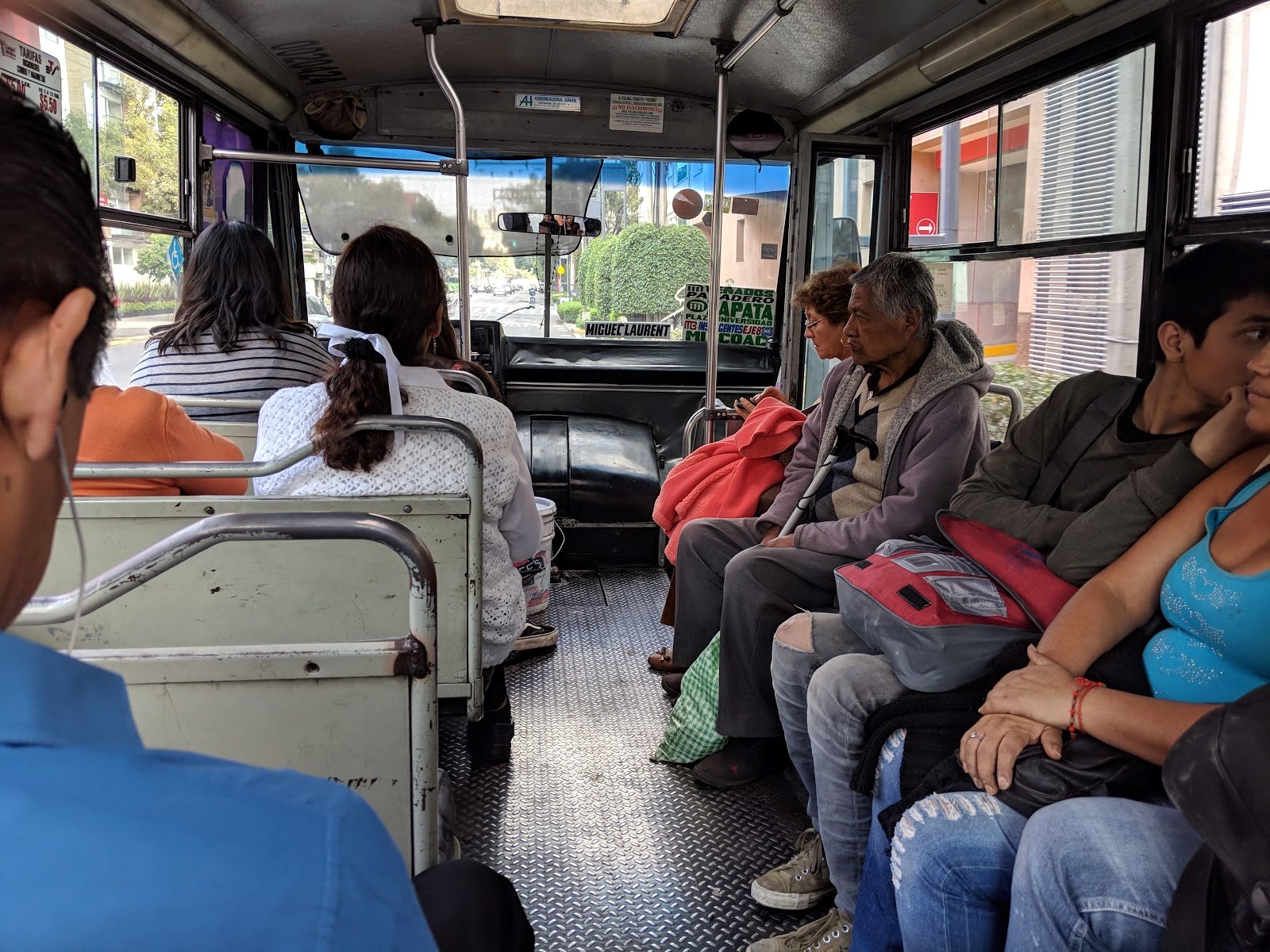Peseros: A Look Inside Mexico City’s Private Bus Network
CDMX Shows That, With the Right Conditions, Private Transit Can Emerge That Is Fast, Cheap, and Ubiquitous.
It seems to be an article of faith among some urban planners that transit can’t be private. If it’s to serve poor demographics and remote areas, the thinking goes, it needs heavy public planning and subsidization. But that view turns out to be parochial. Cities worldwide—including in the US—have proven that with the right conditions, private transit can flourish. It often does so in spite of attempts by the government itself to shut these services down.
Mexico City (CDMX) is a great example. It has a large population, high density levels, and low rates of car ownership, due to its relative poverty. This makes it a transit city. CDMX has a 12-line, 124-mile metro rail system, and a 7-line bus rapid transit system. Because CDMX is so massive, though, these don’t adequately cover the whole city. This means an even more impressive system of private buses—called “peseros”—has arisen to serve residents.
Peseros are typically green and white, and seat around one or two dozen passengers. They are “flex route,” in that they follow the whims of given drivers, who thrive on local knowledge rather than set paths and schedules. Doors stay open so passengers can hop on or off anytime, and drivers stop whenever people flag them down, meaning the stops aren’t limited either. Peseros were first seen in the 1970s, when they got their name for charging 1 peso. Even today they only charge 5 pesos (or USD $0.26) making them competitive with public transit and affordable to the working class.
As I found while riding one, the buses are modest. I handed the money directly to the driver, since there was no payment machine, and sat in the back of the vintage Mercedes vehicle. It soon filled up and became standing room only, as these buses often do. During the 15-minute ride, two teens came on to sell candy, followed by a young pair who performed a live Spanish rap duet (video here).
So, the pesero experience is not remotely formal. But that doesn’t mean it’s a rinky-dink operation. CDMX’s pesero network is one of the world’s largest bus systems. According to a Fast Company article, the system “accounts for 60% of all transit in the city, with about 14 million daily riders on 29,000 buses that run more than 1,500 routes.” The system is organic and largely unregulated; a given entrepreneur buys a bus, tacks on a sign, and hires a driver, who can then use public bus infrastructure and right-of-way.
This model of informal, shared-ride public transit—whether through vans or micro-buses—exists worldwide. They’re called matatus in Nairobi, carro particulares in Cuba, minibuses in Hong Kong, and colectivos throughout much of the rest of Latin America. New York City has “dollar vans” that are technically illegal, but common in the city’s transit-starved immigrant communities. Other US cities once had these buses—known as jitneys—but they were regulated away when they started competing with streetcars.
This speaks to a common industry problem, including in Mexico City: government battles. The city is cracking down on peseros, with a goal to reduce their number by 20,000 (6,000 have already been removed as of 2017, per a CityMetric report). The rationale is that because they’re old, they spew toxic emissions, worsening the city’s already-infamous air pollution; and because they thrive on competition, they incent a lot of bad driving behavior. Both these concerns are valid and could perhaps be addressed if the city had more formal licensing. But to simply remove the peseros without replacing them would be disastrous, given the number of CDMX residents who rely on them.
All these examples make a telling statement about the fundamental market viability of private transit. Not only has it proven to be profitable worldwide—it does so despite government harassment. If van- and bus-pools don’t exist in your city, there’s a good chance it’s because they were outlawed by a legacy of protectionist regulations. But the private transit concept is alive in Mexico City through the peseros, which provide rides that are cheap, spartan, and informal—but highly effective.
Catalyst articles by Scott Beyer | Full Biography and Publications

